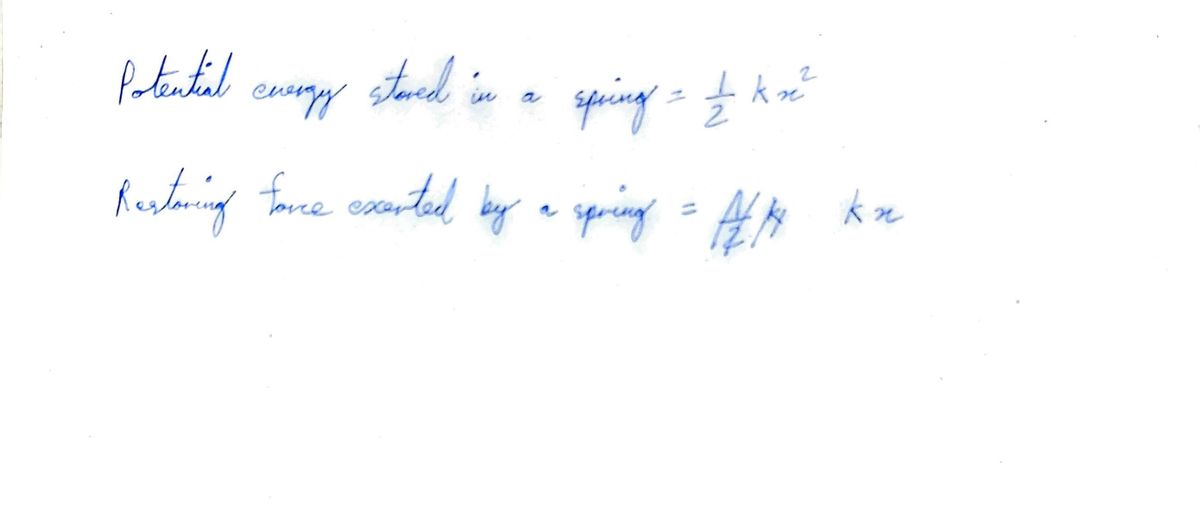A block of mass 0.688 kilograms resting on a smooth horizontal surface is attached to a spring with a spring constant of 33.4 newtons per meter. The block is pulled horizontally 14.1 centimeters from its equilibrium position and released. a. What is the total mechanical energy of the system? Include units in your answer. b. What is the speed of the block when it is 9.0 centimeters from its equilibrium position? Include units in your answer. c. One end of the spring is then attached to a support so it hangs vertically, and the block is suspended from it and lowered into a resting position. How far does the block stretch the spring? Include units in your answer. d. As shown below, the block is then lifted 14.1 centimeters (labeled d in the figure) and released. What is the speed of the block when it is 9.0 centimeters from its equilibrium position
Simple harmonic motion
Simple harmonic motion is a type of periodic motion in which an object undergoes oscillatory motion. The restoring force exerted by the object exhibiting SHM is proportional to the displacement from the equilibrium position. The force is directed towards the mean position. We see many examples of SHM around us, common ones are the motion of a pendulum, spring and vibration of strings in musical instruments, and so on.
Simple Pendulum
A simple pendulum comprises a heavy mass (called bob) attached to one end of the weightless and flexible string.
Oscillation
In Physics, oscillation means a repetitive motion that happens in a variation with respect to time. There is usually a central value, where the object would be at rest. Additionally, there are two or more positions between which the repetitive motion takes place. In mathematics, oscillations can also be described as vibrations. The most common examples of oscillation that is seen in daily lives include the alternating current (AC) or the motion of a moving pendulum.
A block of mass 0.688 kilograms resting on a smooth horizontal surface is attached to a spring with a spring constant of 33.4 newtons per meter. The block is pulled horizontally 14.1 centimeters from its equilibrium position and released.
a. What is the total mechanical energy of the system? Include units in your answer.
b. What is the speed of the block when it is 9.0 centimeters from its equilibrium position? Include units in your answer.
c. One end of the spring is then attached to a support so it hangs vertically, and the block is suspended from it and lowered into a resting position. How far does the block stretch the spring? Include units in your answer.
d. As shown below, the block is then lifted 14.1 centimeters (labeled d in the figure) and released. What is the speed of the block when it is 9.0 centimeters from its equilibrium position (labeled y in the figure)? Include units in your answer. More information. Hint: Since the vertical position of the block is changing, remember to include gravitational potential energy in the equation for the law of conservation of mechanical energy. REFER TO THE IMAGE FOR THIS QUESTION.
PLEASE ANSWER IN HANDWRITING
THANK YOU!!!!
Since you have posted a question with multiple sub parts, we will provide the solution only to the first three sub parts as per our Q&A guidelines. Please repost the remaining sub parts separately.
To calculate the total mechanical energy, the speed of the block at 9.0 centimeters from the equilibrium position from the block and the length that the block stretches when the block and the spring are hung vertically.
Given:
Mass of the block:
Spring constant:
Maximum distance of stretching of the spring:
Distance at which speed is to be determined:

Step by step
Solved in 4 steps with 4 images









